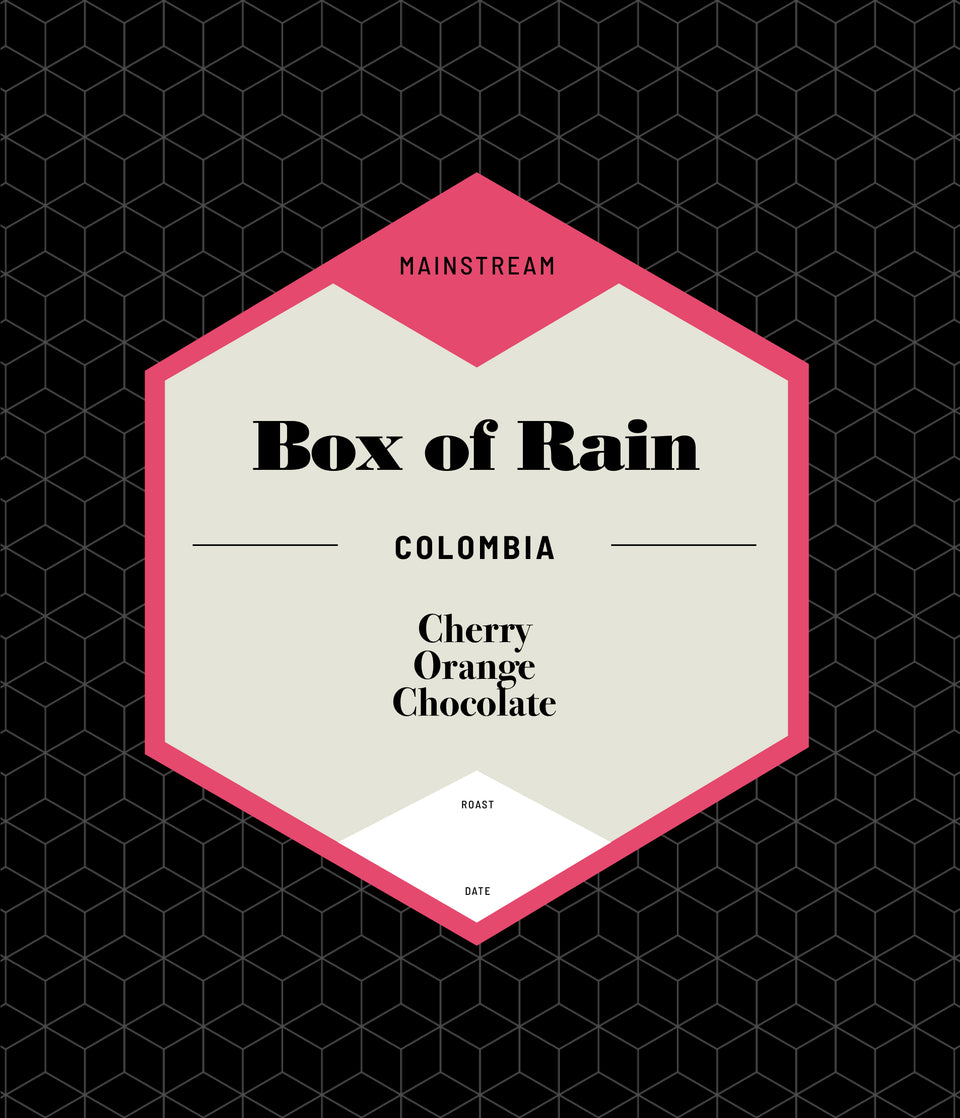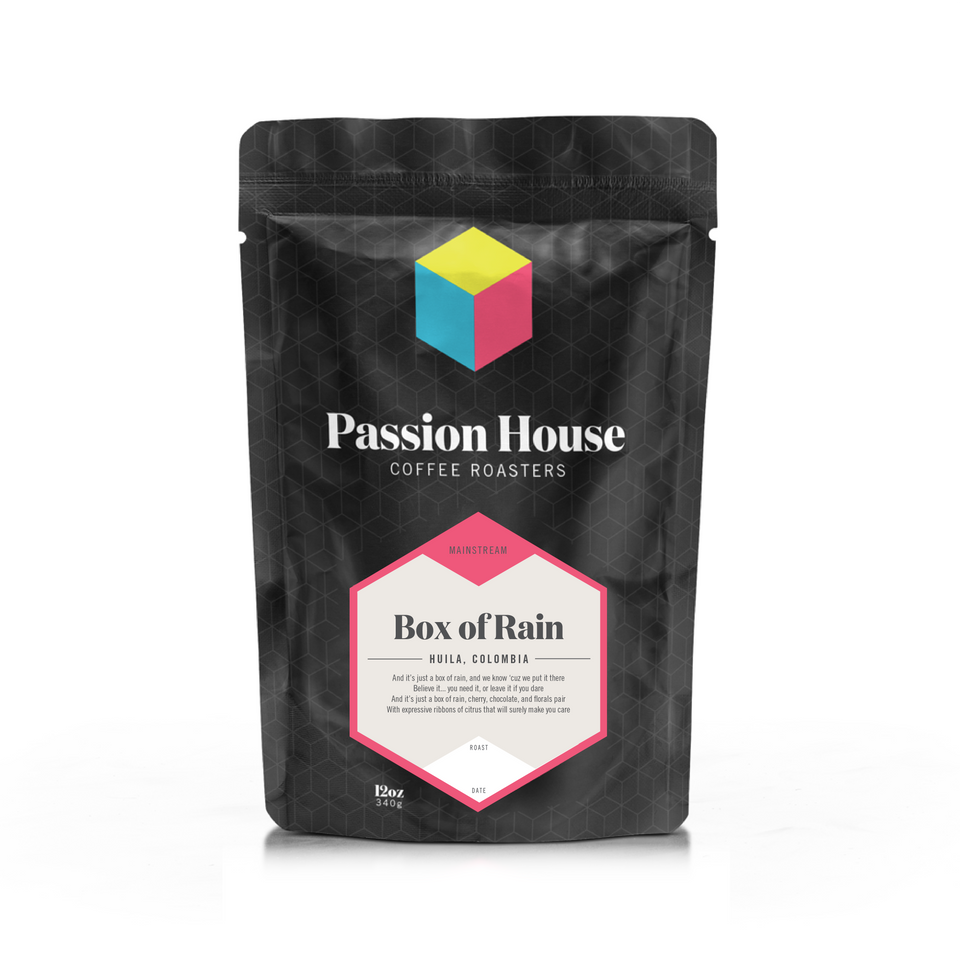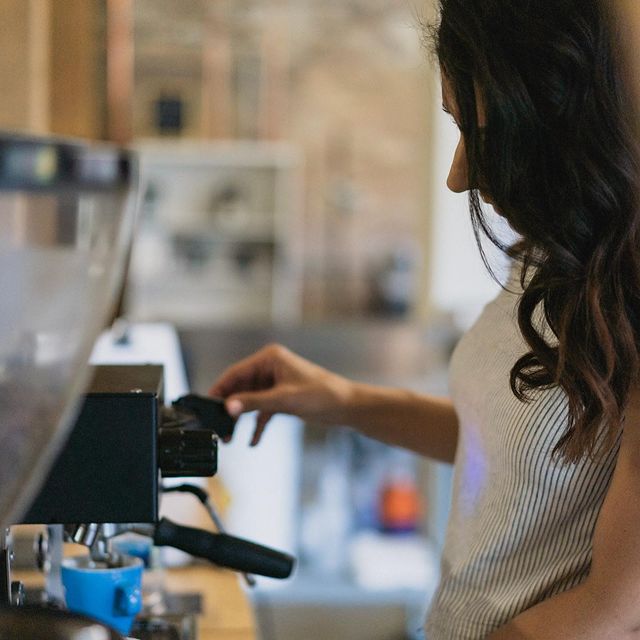

Box of Rain
TECHNICAL:
| Origin: Colombia | Tasting Notes: Grapefruit, citrus, florals, chocolate |
| Region:Cauca | Process: Double Anaerobic Fermentation (with yeast and Thermal Shock) |
| Farm/Mill: Granja Paraiso 92 | Variety: Red Bourbon |
| Farmer:
Wilton Benitez |
Altitude: 6,560-6,890 ft |
| Name Inspiration: Box of Rain, by Grateful Dead | Roast Profile: Medium |
MUSIC INSPIRATION:
ORIGIN STORY
This coffee is named after the ever popular Grateful Dead song A Box of Rain. Colombian coffees are all the rage these days. They tend to find their way onto our shelves as we transition from summer into fall, as the earthy tones pair perfectly with the long, cool nights only to be broken up by the afternoon’s splintered sunlight
Box of Rain is most certainly waiting to meet you, and one taste will help you find direction around the corner where your next adventure is waiting to meet you. Colombia has long been recognized for its excellent coffee, and this year’s Box of Rain exemplifies everything we love about what this heralded region does best!
Granja El Paraíso-92 is a family farm that produces different varieties such as Java, Bourbon Pink, Geisha, Pacamara, Caturra, Tabi, Castillo, Supremo and Colombia using highly innovative cultivation systems such as terraces, drip irrigation, shady and nutrition calculations in laboratory all aimed at producing a unique coffee that can be verified through the multiple awards obtained. Finca Paraiso-92 also has its own microbiology laboratory, quality laboratory and processing plant.The processes applied to the different coffees start from a strict selection, sterilization and characterization of the cherry to later start with the first phase of controlled anaerobic fermentation, adding a specific microorganism for each process, then the coffee is pulped and subjected to a second fermentation phase, when the second phase ends, a bean sealing process is carried out through impacts of hot and cold water to improve the organoleptic conditions of the coffee.


